The effectiveness of SMS marketing is indisputable.
Texting has the highest engagement rate of any marketing medium by far at 82% open rates.1 90% of messages are read within three minutes of receipt.
And most powerful of all?
Your customers want you to use this channel. Over half of all consumers say they prefer to contact support via SMS over all other channels. And most say they prefer to get order status alerts, reservation confirmations, and appointment reminders via text.2
So — how to do SMS marketing effectively? We’ll cover the essentials of text message marketing, including best practices and examples from leading brands, to help you use this channel to engage and convert more customers.
What is SMS Marketing?
SMS marketing, also known as text message marketing, is a form of mobile marketing that involves sending promotional messages or updates to users via short message service (SMS) on their mobile phones. It is a direct and immediate communication channel that businesses use to reach their target audience.
Benefits of SMS Marketing
SMS marketing offers a refreshing approach by delivering concise and impactful messages directly to consumers’ mobile devices. This immediacy not only ensures high open rates but also positions your brand in a space where customers are more likely to notice and act upon your message promptly. By harnessing the potential of SMS, your brand can cut through the digital noise, leaving a lasting impression and cultivating a sense of exclusivity.
In essence, incorporating SMS marketing into your overall strategy can supercharge your profits by tapping into an underutilized channel that captures attention, enhances brand visibility, fosters engagement, and ultimately drives conversions. Embracing the rarity of SMS as a marketing tool positions your brand ahead of the curve, providing a competitive edge that can set you apart in a crowded digital landscape.
Best SMS Marketing Campaigns Strategies in 2024
1. Get Permission & Make Opt-out Clear
You must have permission to send users text messages. Otherwise you’re just spamming people, which can mean irreparable damage to your brand. Not to mention breaking the law and potentially racking up significant legal fees.
Get subscribers to opt in to text messaging with promotional campaigns that ask them to send a keyword to your SMS short code. Or let them check a box during the checkout process alongside email subscriptions. And to encourage opt-ins, be clear about what subscribers can expect. What types of messages will they receive and how often?
For example, “Text ‘SAVINGS’ to 12345 to receive weekly coupons.” The short code serves as the phone number customers text the keyword to. The keyword goes in the body of the message to signify which SMS campaign they’re signing up for.
You can encourage signups on any of your current marketing channels: email, website, in-store, social media, direct mail. For example, Payless prints flyers and posts signs near the store checkout, and Pizza Hut spreads the word on Facebook.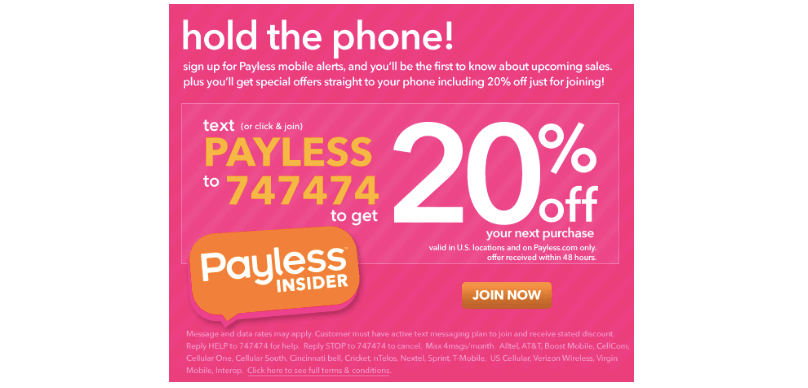
Image: Payless Shoes
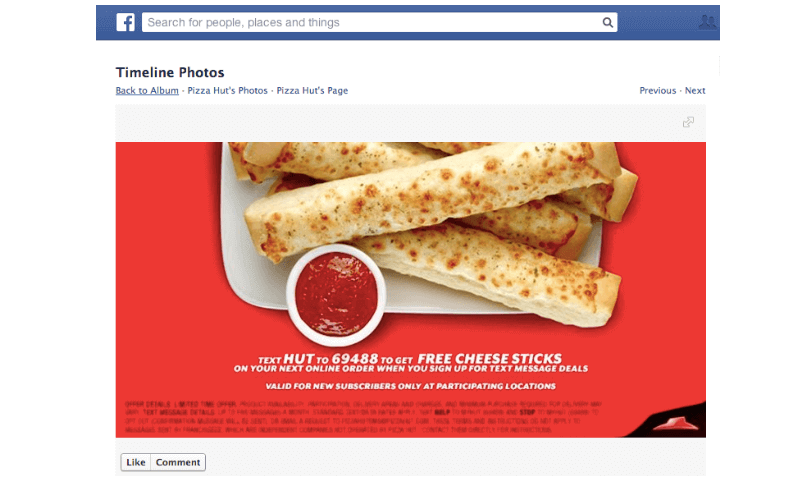
Image: Pizza Hut
2. Know the Rules
The Cellular Telecommunications Industry Association (CTIA) requires SMS marketers to include “msg & data rates apply” in auto-reply messages. Most text marketing services will add this disclaimer automatically, but it’s on you to ensure it’s included.
3. Less is More
How many SMS is too many?
Upland Software’s in-depth analysis of ideal SMS frequency3 recommends starting with 4-5 messages a month and slowly increasing to 10 a month — as long each message provides real value. Of course, you should closely monitor unsubscribes for an uptick in churn to find the sweet spot for your own subscribers.
It’s also a good idea to include frequency in your welcome message so users know how often they’ll hear from you:
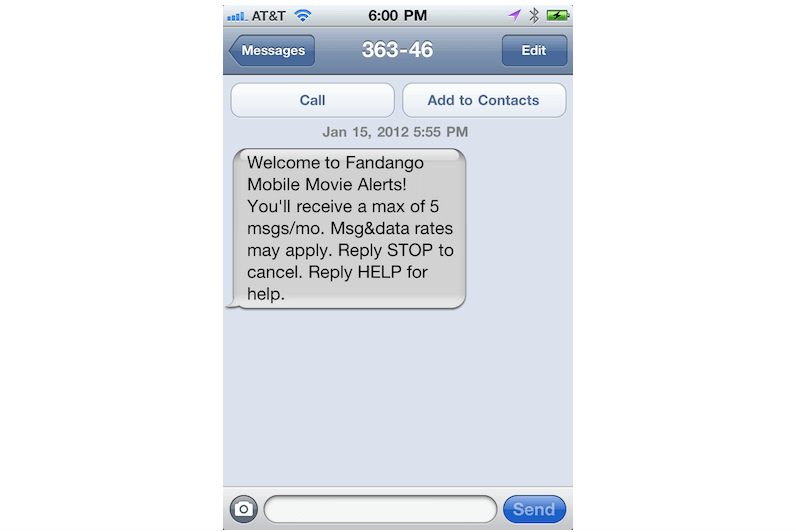
Image: Fandango
When it comes to message length, think short and sweet. Most carriers limit text message length to 160 characters,4 so the faster you get to the meat of your message the better. State value up front, include a crystal clear call to action, and use a URL shortener like goo.gl or bit.ly.
4. Timing Matters
When it comes to timing your text messages, think about your audience’s daily habits. When are they most likely to be on their phones?
According to Mobile Marketer,5 Mondays have the lowest response rates. Unless your message is specifically relevant to that day, avoid it.
You should also steer clear of common commute times, typically 6:30-8:30 am and 4-7 pm, when people are likely driving and unable to read or respond to texts.
In general, standard business hours of 10 am – 8 pm are most effective for SMS marketers. Just be sure to localize send times for your user’s specific time zone. No one wants a coupon code or appointment reminder at 4 am.
5. Keep it Fun!
SMS is a highly personal and informal channel, making it ideal for entertaining campaigns. Think games, promotions, polls, interactive content, and one-on-one conversations. Use it as an opportunity to deliver fun, memorable customer experiences.
Note: Many SMS marketers use shortened text speak like “ur” and “txt” in campaign copy. Feel free to do the same, as long as your message is easily readable.
Starbucks has long used SMS to delight customers with trivia games, quirky memes, and personalized rewards. This campaign from 2013 takes advantage of the immediacy of SMS by rewarding the first 100 correct responders. And it cleverly reinforces the essential role music plays in their customer experience.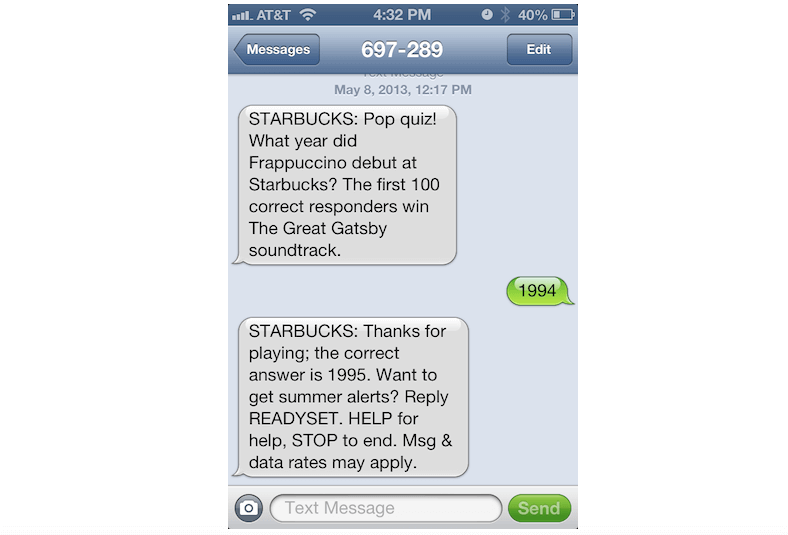
Image: Starbucks
This recent campaign pairs the informal nature of SMS with summertime fun, featuring intergalactic cat gifs, silly “Pew Pew!”s, and OMGs. And it delivers real value with 50% off coupons and extended happy hours for subscribers.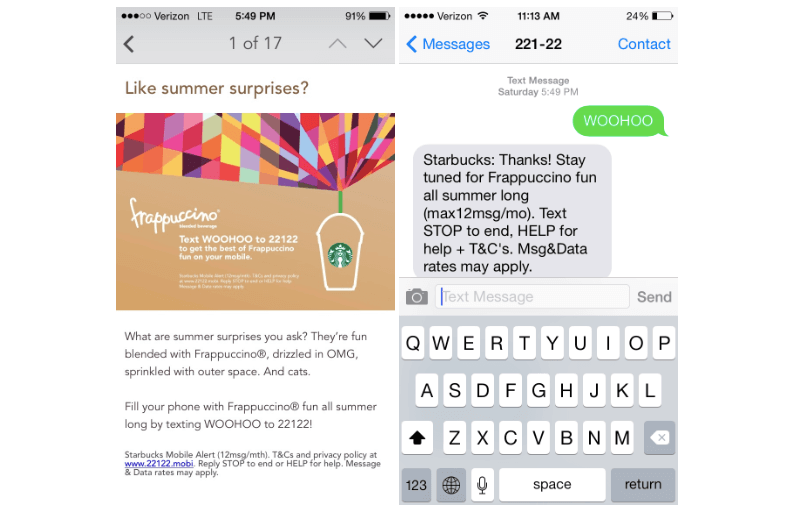
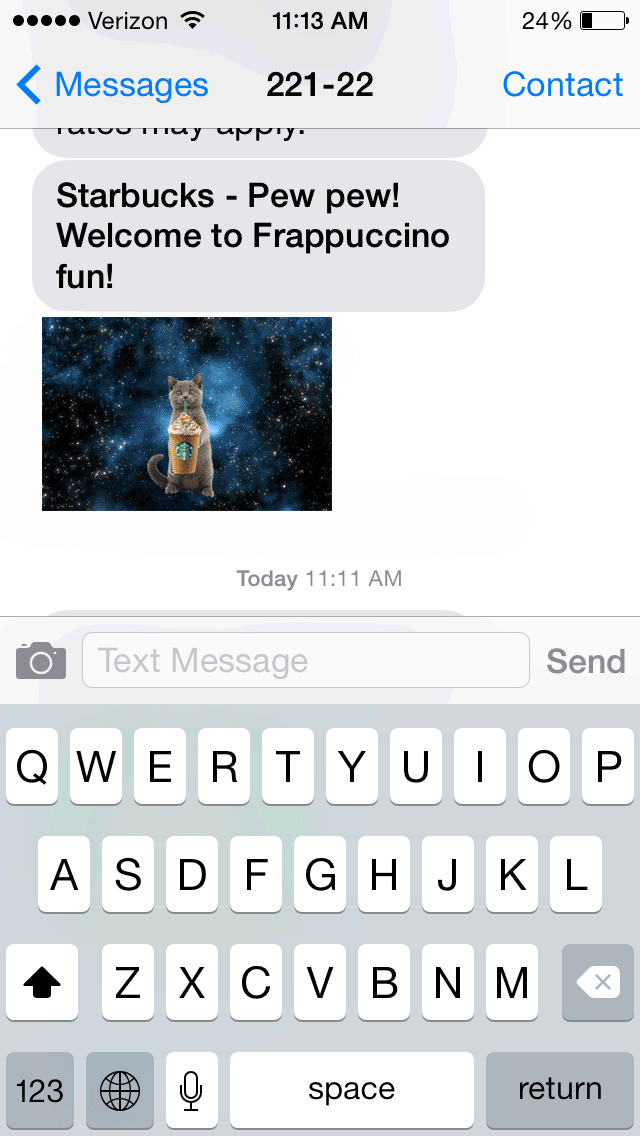
Image: Starbucks
6. Segment
You wouldn’t talk to a brand new visitor the same way you would a loyal customer. Same goes for SMS. Segment your audience to ensure that each user gets relevant, valuable content.
New visitors could get free shipping or a promo code, while repeat customers get early access to new products or an invite to your rewards program.
Use profile data to send birthday promotions, new customer discounts, or location-based campaigns to give each user a personalized experience and up conversions.
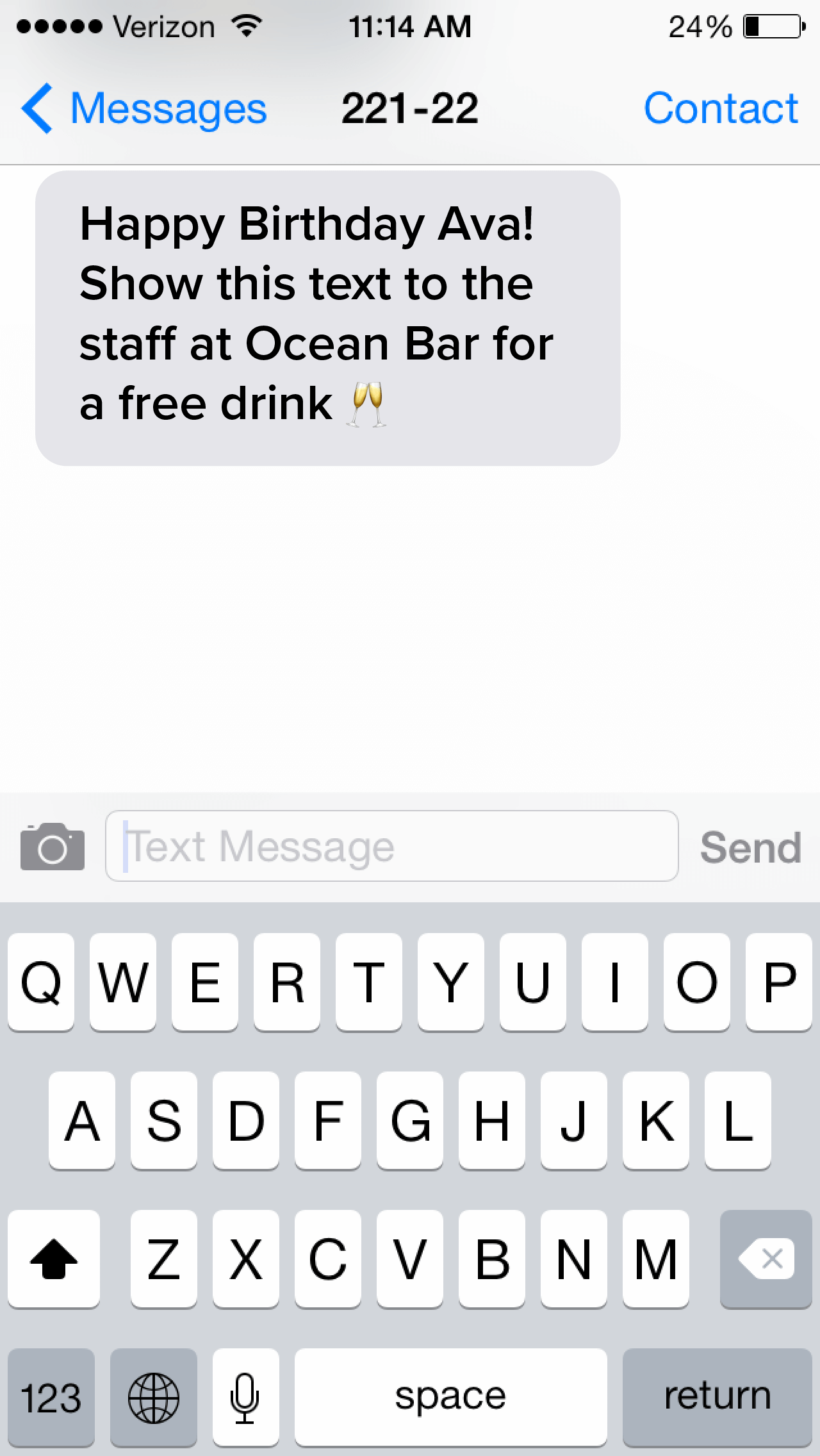
7. Instill Urgency
One of the central benefits of SMS is immediacy. So use that to your advantage.
Pair SMS with location-based campaigns to send tempting promotions to users when they arrive or pass by your store. Include phrases like “valid till,” “expires soon,” or “today only” in your message copy to create a sense of urgency and prompt recipients to act.
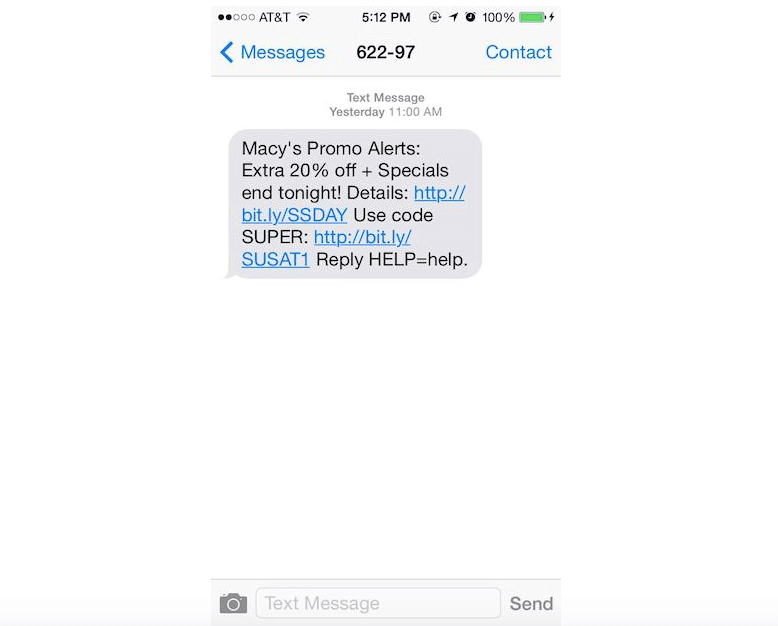
Image: Macy’s
8. Make It Exclusive
One way to keep subscribers from opting out of your SMS campaigns? Send exclusive offers or VIP content they won’t get on any other channel.
AMC Theaters uses SMS to keep its Stubs club members up to date on their rewards points and membership benefits. Subscribers get access to free movie screenings, special event invites, concession discounts, and movie swag giveaways.
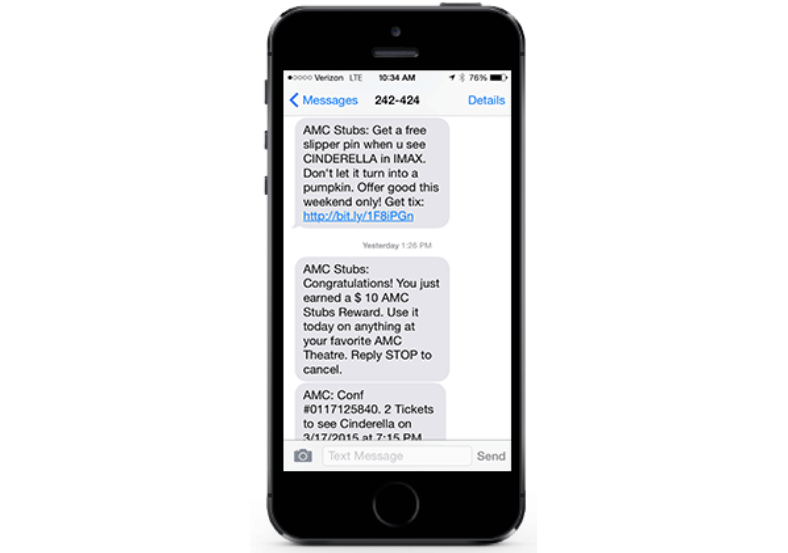
Image: AMC Theaters
9. Track Open & Click Rates
As with any other medium, you should track how users are engaging with your text campaigns. How many open your message? How many click the link or send a response? How many opt out?
According to current SMS marketing industry benchmarks, 70% of customers open SMS messages within 60 minutes. 19% of recipients click on a link.6
Like any other channel, you should A/B test messaging, audiences, and timing to keep improving your SMS marketing strategy.
10. Use SMS as Part of an Omnichannel Strategy
Today’s mobile users demand a consistent customer experience regardless of channel or device. An omnichannel strategy is essential to building a strong, lasting relationship with your brand.
Your SMS campaigns shouldn’t be one-offs. They should complement and connect with your push, email, and social campaigns to reinforce customer relationships and provide a seamless experience.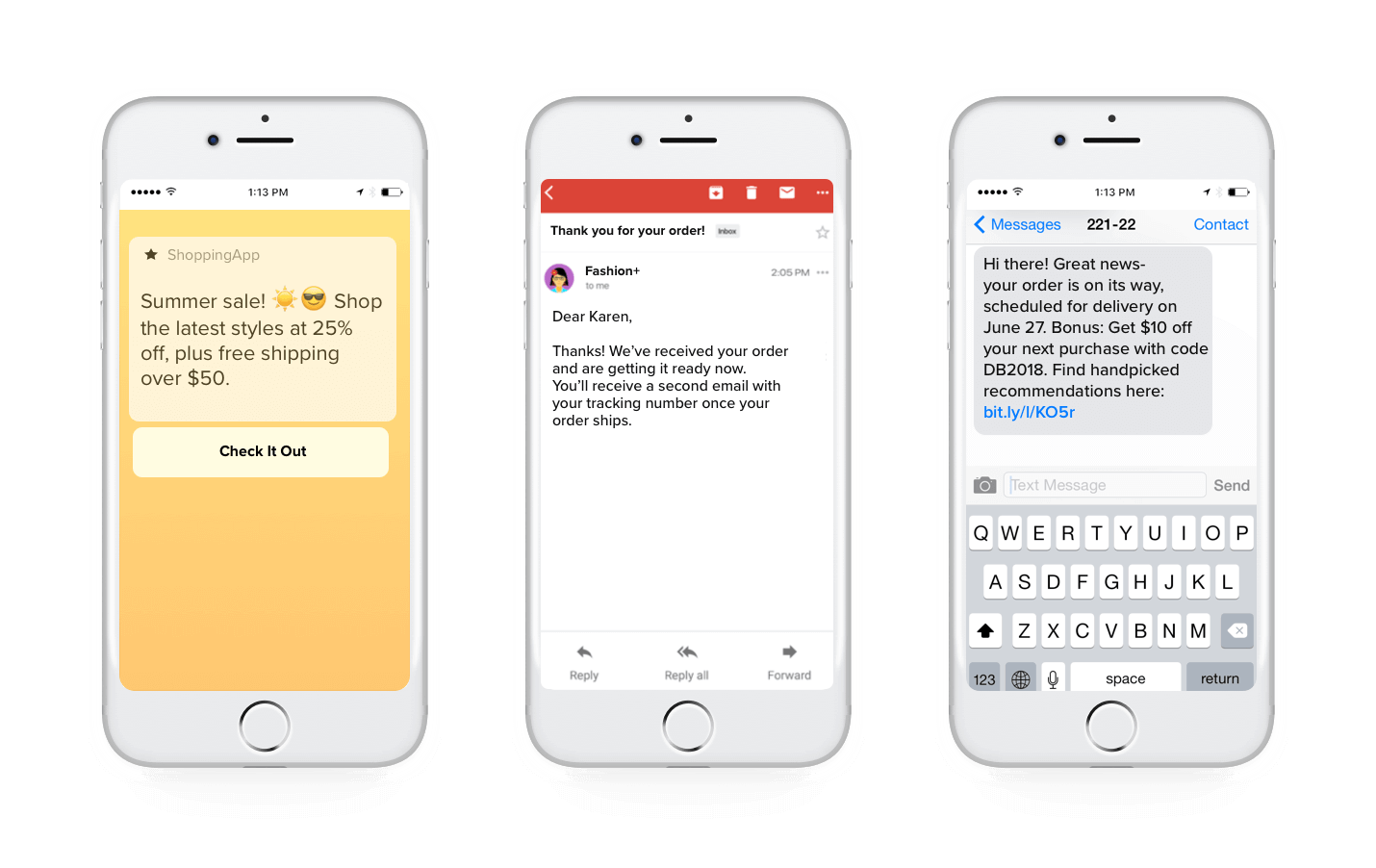
Building Your SMS Marketing Strategy
To decide if marketing through SMS is right for your campaign, ask yourself these questions:
- Is your campaign time-sensitive? SMS is best for urgent messages you want recipients to see immediately.
- Is SMS the best format? If you can’t effectively communicate your message in 160 characters or less, consider email or push notifications instead.
- Is the information valuable enough that consumers will feel delighted to get the message on such a personal channel, instead of annoyed?
If the answer is yes to all, you’re ready to start building your SMS campaign. Learn more about how CleverTap makes engaging users with timely, personalized SMS campaigns easy.

See how today’s top brands use CleverTap to drive long-term growth and retention
Shivkumar M 
Head Product Launches, Adoption, & Evangelism.Expert in cross channel marketing strategies & platforms.
Free Customer Engagement Guides
Join our newsletter for actionable tips and proven strategies to grow your business and engage your customers.














































